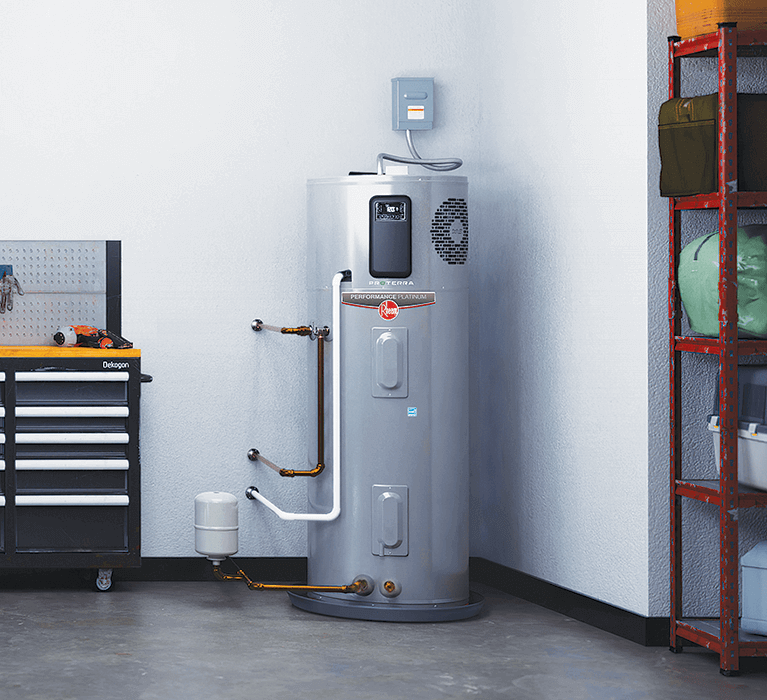What to Care for Your Home's Hot Water System EffectivelyExpert Advice for Maintaining Your Home's Hot Water SystemEffective Techniques for Caring for Your Home's Hot Water System
What to Care for Your Home's Hot Water System EffectivelyExpert Advice for Maintaining Your Home's Hot Water SystemEffective Techniques for Caring for Your Home's Hot Water System
Blog Article
Everyone has their unique assumption about How to Maintain Your Water Heater & Prolong its Life.

Hot water is necessary for daily convenience, whether it's for a rejuvenating shower or washing recipes. To ensure your warm water system runs effectively and lasts much longer, routine upkeep is essential. This write-up offers practical pointers and insights on exactly how to keep your home's hot water system to prevent disturbances and pricey fixings.
Introduction
Keeping your home's hot water system could seem overwhelming, yet with a few simple steps, you can guarantee it operates smoothly for several years to come. This guide covers every little thing from understanding your warm water system to DIY maintenance ideas and recognizing when to call professional assistance.
Relevance of Maintaining Your Warm Water System
Regular maintenance not only expands the lifespan of your warm water system but also ensures it operates effectively. Ignoring maintenance can result in reduced efficiency, greater energy expenses, and also premature failure of the system.
Indicators Your Hot Water System Requirements Maintenance
Understanding when your hot water system requires attention can stop major issues. Watch out for indications such as inconsistent water temperature level, weird sounds from the heater, or rusty water.
Comprehending Your Hot Water System
Before diving right into upkeep tasks, it's handy to understand the fundamental parts of your hot water system. Generally, this includes the water heater itself, pipelines, anode poles, and temperature controls.
Monthly Upkeep Tasks
Routine regular monthly checks can assist capture small issues prior to they intensify.
Flushing the Water Heater
Purging your water heater removes sediment buildup, boosting effectiveness and lengthening its life.
Monitoring and Replacing Anode Rods
Anode poles avoid rust inside the container. Examining and changing them when worn out is important.
Inspecting and Adjusting Temperature Level Settings
Adjusting the temperature level settings guarantees optimum efficiency and safety and security.
DIY Tips for Maintenance
You can execute several upkeep jobs yourself to keep your warm water system in top condition.
Checking for Leakages
On a regular basis check pipelines and links for leakages, as these can lead to water damage and higher costs.
Testing Stress Alleviation Valves
Evaluating the pressure safety valve guarantees it works correctly and stops excessive stress accumulation.
Protecting Pipes
Shielding hot water pipes lowers warm loss and can save power.
When to Call an Expert
While DIY upkeep is helpful, some problems require specialist competence.
Complex Concerns Needing Specialist Assistance
Examples include major leaks, electric issues, or if your hot water heater is regularly underperforming.
Routine Professional Upkeep Benefits
Professional upkeep can include complete evaluations, tune-ups, and guaranteeing conformity with security standards.
Final thought
Normal upkeep of your home's hot water system is important for performance, longevity, and cost financial savings. By following these pointers and recognizing when to look for professional help, you can ensure a dependable supply of warm water without unexpected disruptions.
How to Maintain an Instant Hot Water Heater
Before tinkering with your hot water heater, make sure that it’s not powered on. You also have to turn off the main circuit breaker and shut off the main gas line to prevent accidents. Also turn off the water valves connected to your unit to prevent water from flowing into and out of the appliance. 2. When you’re done, you have to detach the purge valves’ caps. These look like the letter “T” and are situated on either side of the water valves. Doing so will release any pressure that has accumulated inside the valves while at the same time avoid hot water from shooting out and burning your skin. 3. When the purge valves’ caps are removed, you have to connect your hosing lines to the valves. Your unit should have come with three hoses but if it didn’t, you can purchase these things from any hardware or home repair shops. You can also get them from retail stores that sell water heating systems. Read the user’s manual and follow it to complete this task properly. When the hosing lines are connected, open the purge port’s valves. 4. You should never use harsh chemical cleaners or solutions when cleaning your unit. Make use of white vinegar instead. It should be undiluted and you’ll probably use about 2 gallons. 5. Now flush your water heater. This task should probably take about 40 minutes. We can’t give you specific directions for this because the procedure is carried out depending on the type, model and brand of your heater. With that being said, refer to the user’s manual. 6. When you’re done draining the unit, you have to turn off the purge port valves again. Remove the hosing lines that you earlier installed on each of the water valves. Put the valve caps (purge port) back in their respective places and be very careful so as not to damage the rubber discs that are found inside these caps. 7. Now that everything’s back in place, check your user’s manual again to find out how to reactivate your water heating system. 8. Once it is working, turn one of your hot water faucets on just to let air pass through the heater’s water supply pipes. Leave the tap on until water flows smoothly out of it. https://www.orrplumbing.com/blog/2014/september/how-to-maintain-an-instant-hot-water-heater/

We are very curious about What Kind of Maintenance Do Water Heaters Need? and I really hope you liked the new blog entry. Sharing is nice. Helping people is fun. I take joy in your readership.
Go Deal Report this page